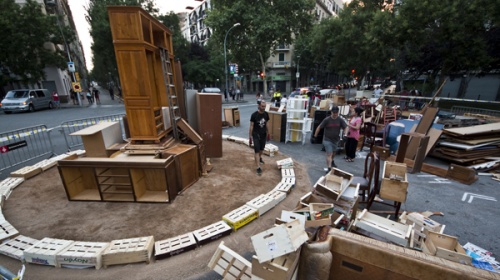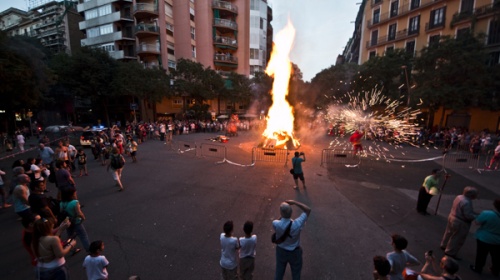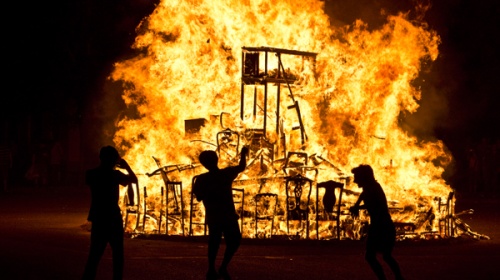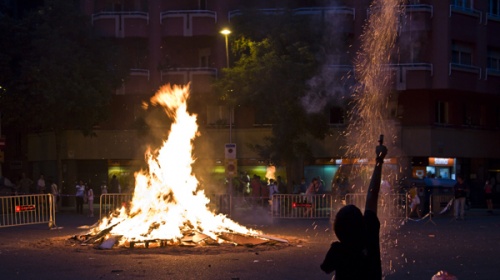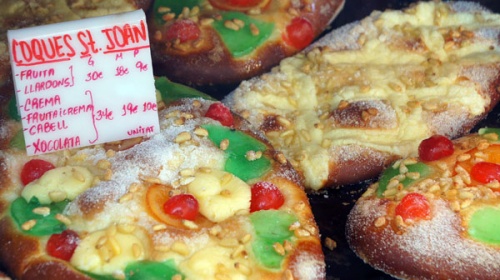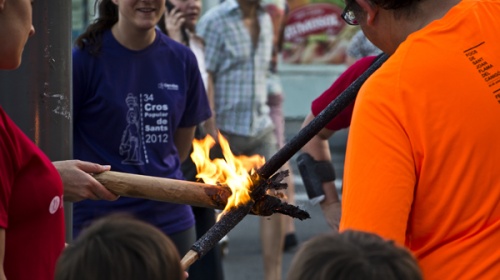Nit de Sant Joan
Activity dates
Dates de celebració
On the eve of St. John’s Day, the 24th June
Feast day: 23rd June
Description
The Revetlla de Sant Joan, the St. John’s Eve celebrations, are held across the country and take many forms. In Barcelona everyone celebrates in their own way, with neighbours, friends and families getting together for an evening meal, to play music and light bonfires.
In the afternoon of 23rd June the Canigó Flame reaches Plaça de Sant Jaume, where it is received by representatives of the municipal authorities, along with City’s Eagle and Giants, to a rendition of the Muntanyes del Canigó. Then the representatives of each neighbourhood take the flame to light bonfires across the city.
When the bonfires are lit the celebrations, the revetlles, begin in the Barcelona’s streets and squares, along with neighbourhood meals, firework displays, dances and revelry until the small hours.
Reason
The night of 23rd June is a magical night celebrating the summer solstice, just a couple of days late. The Catholic Church combined it with a celebration of the birth of St. John the Baptist, so it has become a festival marked by symbolic elements and customs: the purifying fire, midnight bathing, the herbs of Sant Joan, songs, dances, cures and other ritual magic.
Origins
St. John’s Eve has pagan origins and is one of the solstice festivals, like Christmas. The tradition long predates the introduction of Christianity. It is from a cult of the sun, celebrating the lengthening of the day and the summer solstice.
The Nit de Sant Joan has long been celebrated in Barcelona, with bonfires at the heart of the festivities, as it is a commonly held belief that the flames frighten off and dispel the evil spirits that are are abroad on this night. In fact, laws were introduced in the 18th century to curb the spread of fireworks and bonfires in the city, which suggests that by that time it was already a well-established tradition. Despite the bans and restrictions of the 20th century, though, the festival has continued to this day.
Did you know...
Sabies que...
This is a night when water, considered to be a source of virtue and a guarantee of life in rural communities, is believed to be full of curative powers. Long ago taking a dip at midnight was a compulsory ritual. And it is still very common along the coast, whether for health reasons or because the temperature, setting and celebration mean people can continue partying in the sea.
About festivities
Supplementary information
Organisers
Barcelona City Council, Òmnium Cultural
Other websites
Materials
Barcelona festival protocol. Barcelona City Council. Culture Institute.




